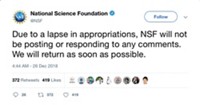Advertisement
Grab your lab coat. Let's get started
Welcome!
Welcome!
Create an account below to get 6 C&EN articles per month, receive newsletters and more - all free.
It seems this is your first time logging in online. Please enter the following information to continue.
As an ACS member you automatically get access to this site. All we need is few more details to create your reading experience.
Not you? Sign in with a different account.
Not you? Sign in with a different account.
ERROR 1
ERROR 1
ERROR 2
ERROR 2
ERROR 2
ERROR 2
ERROR 2
Password and Confirm password must match.
If you have an ACS member number, please enter it here so we can link this account to your membership. (optional)
ERROR 2
ACS values your privacy. By submitting your information, you are gaining access to C&EN and subscribing to our weekly newsletter. We use the information you provide to make your reading experience better, and we will never sell your data to third party members.
Policy
Government Shutdown Strikes Science
Congressional impasse continues as many federal workers head home
by Andrea Widener
October 1, 2013
No last minute deal saved the federal government from shutting down almost entirely today for the first time in 17 years.
As 800,000 federal workers were forced from their offices on Tuesday morning, the House of Representatives and the Senate still cannot agree on a plan to keep government running. The 2014 fiscal year starts on Oct. 1, but because Congress has failed to pass a budget, all but essential government operations have been forced to close.
In the chemistry community, the biggest impact is likely felt by federal staff scientists at agencies such as the National Institutes of Health, the Environmental Protection Agency, the National Aeronautics & Space Administration, and many others. Some government scientists have had to temporarily abandon their research and will not be paid for the missed days. These same scientists are among the federal workers who have already suffered the effects of across-the-board budget cuts known as sequestration that took effect on March 1, forcing furloughs and project reductions.
But the shutdown is also leaving chemists from academia and industry in the lurch. Many regulatory agencies have halted inspections, such as the Food & Drug Administration’s food safety checks, and processing of applications, such as EPA’s premanufacture notices approving new chemicals.
The Society of Chemical Manufacturers & Affiliates, an industry trade group, and its members are particularly concerned that the shutdown will halt free-trade negotiations with Europe scheduled for next week, says William E. Allmond IV, vice president of government and public relations.
The shutdown also distracts Congress from other legislation the group would like to see passed, including regulatory reform and tax reform. “It puts all of those industry priorities on the back burner,” Allmond says.
Research agencies such as the National Science Foundation have quit processing new grants, though grantees who have already received funds can spend that money. Scientists with pending grant applications cannot work on them because many government websites are not operating.
George Washington University’s chemistry department chair Michael King says he is most worried about junior faculty members who have federal grants under review—but he says the full brunt of the closure is not yet apparent.
“What’s disappointing is the time and effort that is being devoted to figuring out what to do rather than doing something productive for our teaching and research,” King says.
No one knows how long the shutdown will last. The political fight is over the Affordable Care Act (ACA), also known as Obamacare. House Republicans have passed three bills linking cuts to ACA to continued government funding, and three times the Senate has stripped out those cuts returning a clean funding bill to the House that, in turn, the majority there will not vote to approve.
The House has proposed a conference committee to try to force a deal that includes cuts to the new health care law. But Senate Democrats say House Republicans have, for months, rejected attempts to create such a conference committee, and they won’t do it now if ACA is on the table.
While talks continue, some agencies are still at work. For example, the Patent & Trademark Office remains open because it operates on funds from fees that PTO charges. And FDA will continue to process New Drug Applications with user fees that it collects.
Although 70% of Department of Energy employees are now furloughed, many of the national laboratories will continue operating on contingency funds, at least for the short term.
“I ask you to maintain your focus during these uncertain budgetary times,” Los Alamos National Laboratory director Charles F. McMillan wrote to employees last week. “Watch out for each other and concentrate on things we can control.”



Join the conversation
Contact the reporter
Submit a Letter to the Editor for publication
Engage with us on Twitter